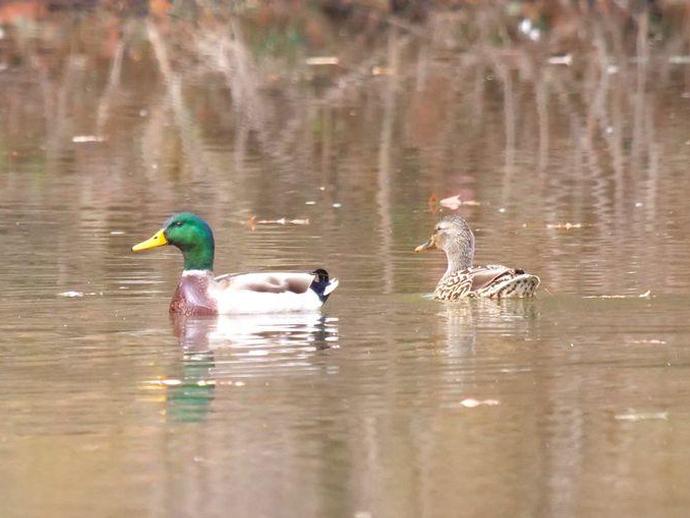December 6, 2021
Ben here with today's edition of #BenInNature presented by our friends at Carter Bank & Trust!
Welcome to DUCK WEEK!
Last week, I joined VMNH Associate Curator of Invertebrate Zoology Dr. Kal Ivanov, Myriapodologist Dr. Jackson Means, and Emeritus Curator of Geology and Expert Birder Dr. Jim Beard for a morning of birding at Lake Lanier in Martinsville. While we saw plenty of cool birds, the highlight of the trip was the variety of ducks, including a number of migratory species I'd never seen before. This week I'm going to highlight the ducks we spotted, starting with one of our most common species: the mallard (Anas platyrhynchos).
Mallards are the ancestors of most domestic ducks, and they're an extremely common species; in fact, they're one of the few waterfowl that's considered an invasive species in some regions. They have been introduced in Australia, New Zealand, and parts of South America and South Africa. Here in Virginia, they can generally be found year-round.
In areas where mallards do not migrate, they often breed with wild ducks of closely related species. This usually results in fertile offspring, which has served to muddy the genetic waters of this species. In fact, many of the mallards that we see in this area are actually hybrids!
Of all the species of ducks, the mallard is the one with the closest relationship to humans. This is the duck that humans have used to breed most domestic ducks; it's the duck that we most often use for food; and it's the duck that people are most likely to hunt. While that may seem like a raw deal for the mallards, the relationship isn't entirely one-sided; human-created ponds and water features serve as the perfect spots for these adaptable birds.
Be sure to check back tomorrow (and the rest of this week) for more cool ducks!
ABOUT #BenInNature
Social distancing can be difficult, but it presents a great opportunity to become reacquainted with nature. In this series of posts, Administrator of Science Ben Williams ventures outdoors to record a snapshot of the unique sights that can be found in the natural world. New updates are posted Monday - Friday, with previous posts highlighted on the weekends. This series of posts is made possible thanks to the support of VMNH Corporate Partner Carter Bank & Trust (www.cbtcares.com).
NATURE PHOTO IDENTIFICATIONS
If you discover something in nature that you would like help identifying, be sure to message us right here on Facebook with a picture (please include location and date of picture) and we'll have our experts help you identify it!

 Hours & Admissions
Hours & Admissions Directions
Directions

